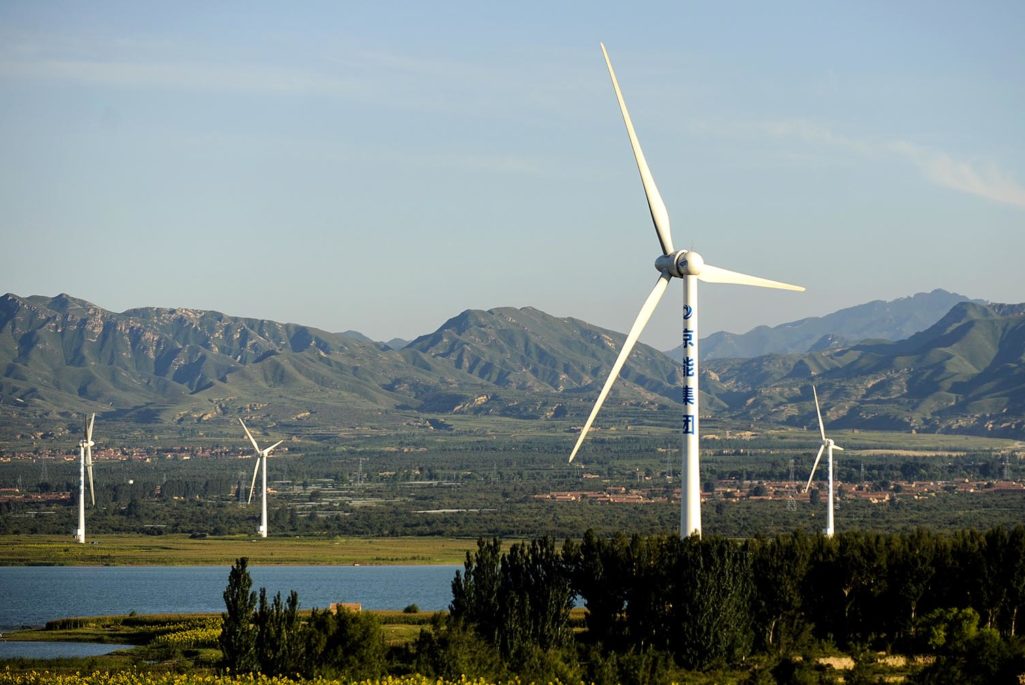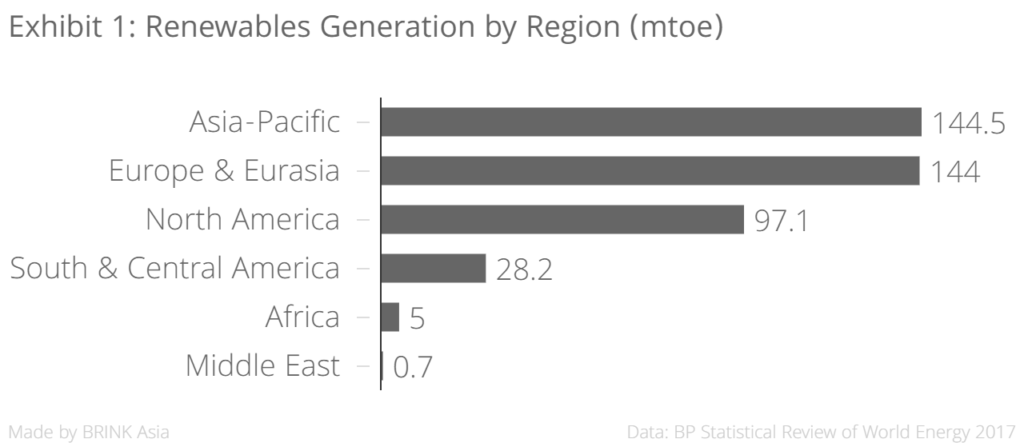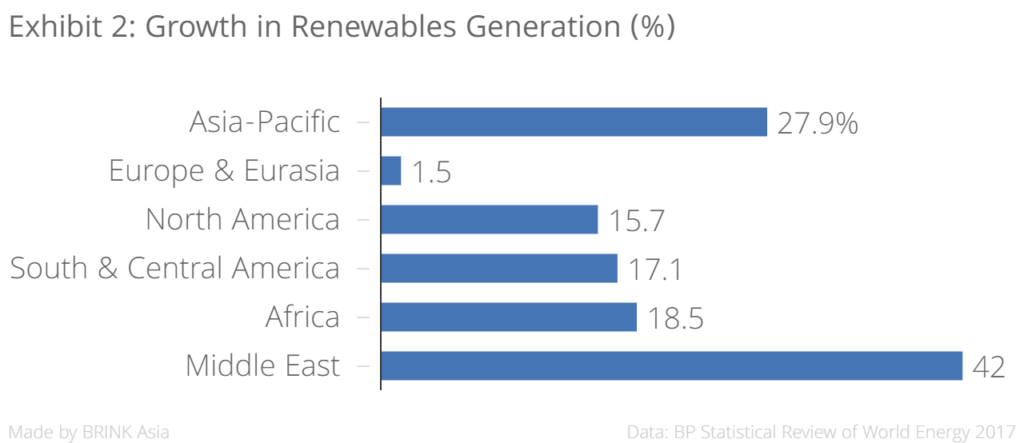China Surpasses U.S. as Top Renewable Energy Producer

This picture shows a wind farm on the outskirts of Beijing. China has leapfrogged the U.S. to become the world’s largest producer of renewable energy.
Photo: Peter Parks/AFP/Getty Images
The Asia-Pacific region overtook Europe and Eurasia as the largest producer of renewable power in 2016, with China continuing to dominate the renewable energy sector, contributing to over 40 percent of global growth. In the process, China surpassed the U.S. as the world’s largest producer of renewable energy, according to a recent report.
This was accompanied by a fall in coal production of 140 million tons of oil equivalent (mtoe), contributing to 61 percent of the global fall in coal production in 2016.
Reduction in China’s Carbon Emissions
On another positive note, China’s carbon emissions fell for the second consecutive year, after growing by more than 75 percent in the previous 10 years. According to Spencer Dale, group chief economist at BP, “[T]here are good reasons for thinking that some of this improvement in China’s carbon emissions reflects structural factors that are likely to persist: slower economic growth; a shift in the composition of growth towards less energy-intensive sectors, and a movement away from coal.”
Part of the decline in emissions can also be attributed to cyclical factors, such as the contraction seen in a few of China’s most energy-intensive sectors, “which are unlikely to keep being repeated and may well unwind in future years,” Dale added.
Renewables Growth
Globally, renewable energy production grew by 14.1 percent in 2016, with Asian renewable production growing 27.9 percent. Only the Middle East saw a higher growth rate (42 percent), but this was from a significantly lower base.
Although growth in China’s hydropower production has slowed sharply in recent years compared to the early 2000s, it was still the largest contributor to global hydro growth, with an increase of 10.9 mtoe.
Separately, China’s nuclear power generation increased by 24.5 percent (or 9.6 mtoe)—compared to the global increase of 1.3 percent—the fastest growth in China’s history. According to the report, China’s nuclear program is just beginning to ramp up. Five new reactors were commissioned and brought into use in 2016, while another 20 are under construction.
Oil Still Dominates as Primary Energy Source
The surge in global renewable energy production notwithstanding, global oil demand grew by 1.6 million barrels per day in 2016. This increase was almost entirely due to oil importing nations, with India and Europe posting high growth rates of 0.3 million barrels per day. China’s oil consumption also grew, according to the report, but at a more subdued rate compared to previous years of 0.4 million barrels per day.
Despite noteworthy strides in the renewables sector, oil continues to be the dominant source of power, constituting almost a third of all energy consumed. In Asia, the dominant source of fuel is still coal, and the region accounts for 73.8 percent of global coal consumption.
This is because the demand for energy continues to grow at a more rapid pace than the growth in renewable energy generation. This demand is led by China and India, which together account for about half of the total increase in global energy demand, the report says.







